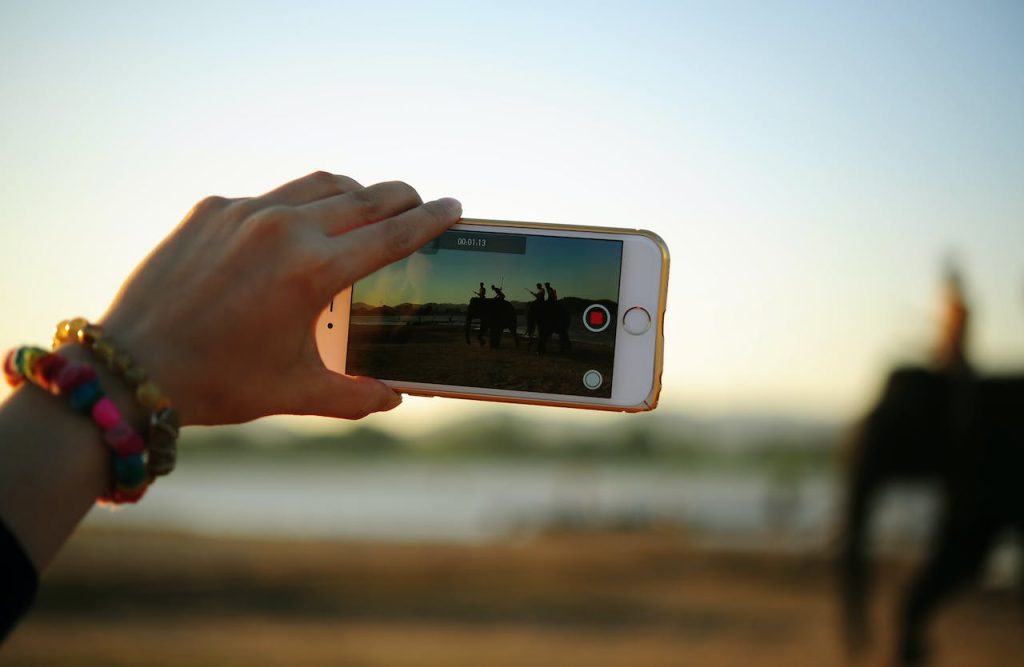There really is no better time for fundraisers than the end of the year. Donations traditionally spike in the last three months of the calendar year, so it’s important to plan your year-end giving marketing strategy in advance to take advantage of this annual outpouring. An effective way to find new donors for your organization is to ensure people know about your cause, making promotion a crucial part of your year-end campaign. And once you capture your donors’ attention, you can engage with them throughout their giving journey to help retain them well past their end-of-the-year donation.
Year-end giving 101
Year-end giving refers to the rise in charitable giving during the last three months of the calendar year. It greatly impacts nonprofit fundraising due to the rise in donations and awareness of each cause. To maximize your year-end fundraising efforts, use this guide to market your organization’s campaign.
End-of-year giving timeline
- Preparation. Because of how important year-end giving is, you should prepare to promote your giving initiatives and make sure all your resources are ready a few months in advance.
- Marketing lead-up. Start your end-of-year marketing campaign in October to raise awareness for your cause and get your donors in a giving mood before Giving Tuesday
- Giving Tuesday. The first Tuesday after Thanksgiving is Giving Tuesday, this is an international day of charitable giving to many nonprofits. This giving day often functions as a kickoff for year-end fundraising campaigns for many organizations.
- Build up campaign. After you’ve thanked your Giving Tuesday donors, ramp up your marketing campaign to keep your organization on your supporters’ minds as the year closes.
- New Year’s Eve. Giving tends to peak on this day, especially due to tax benefits.
- New Year’s Day. This day marks the conclusion of the giving season.
- Follow-up. Once your year-end giving campaign finishes, follow-up with your donors to thank them and provide updates on how their generosity has helped change the world.
Year-end giving statistics
Year-end giving can have a huge impact on your revenue for the year. Check out these year-end giving statistics to put this in perspective:
- 37%. The last three months of the year are when 37% of giving occurs. (Source: Qgiv)
- October. The most popular month to start planning your year-end giving campaign is October. (Source: CharityEngine)
- $3.1 billion. In 2022, $3.1 billion was donated during Giving Tuesday in the United States. (Source: GivingTuesday)
- $121 average donation. The average one-time donation in 2022 was $121. (Source: M+R Benchmarks)
- 1/4 of annual giving. Nearly 1/4 of annual giving occurs in December. (Source: M+R Benchmarks)
- 12% of annual giving occurs during the last 3 days of the year. (Source: Qgiv)
The year-end giver’s journey
It’s important to make people aware of your cause and provide the tools they need to make an informed decision before they decide to give to your nonprofit. Here is the year-end giver’s journey in five steps.
Step 1: Raising donor awareness
The first step of the year-end giver’s journey involves them becoming aware of and learning about your cause. This is your giver’s first impression of your cause and starts to answer the question of why they should give to your organization. Even though the end of the year is a popular time for giving, this isn’t a guarantee that donors will automatically choose you.
To help make a lasting impression and sway new donors to your cause, you can:
Host events
Host a Giving Tuesday kickoff event, which can be done online or in person. Giving Tuesday is an excellent day to start your end-of-year giving appeals and draw attention to your cause. An event will also allow you to directly interact with potential year-end givers and expose them to the great work your nonprofit is doing.
There are many types of events you can host to engage your donors, from auctions to peer-to-peer events. And your event doesn’t have to be in-person! Hybrid and virtual events are great options to motivate your donors for your year-end giving campaign.
Use media
Use different types of media to drive your cause home. Media can be easily shared across multiple social platforms and customized to explain your mission, as well as show how you help your beneficiaries. Live videos or thank-a-thons are excellent and unique ways to leverage social media.
Don’t forget about email! Email is still a strong source of donation revenue. Perform email outreach tailored to segmented groups of donors to present your cause and encourage them to take part in your year-end giving campaign.
You can also create educational content with blogs and webinars. Blog content can help drive traffic to your website by increasing your SEO results while going more in depth about your cause. Webinars are a great opportunity to invite experts to speak to potential donors and show them why what you do is important.
Use online tools
- Online giving forms. Forms that are branded, customizable, and easy to navigate encourage individuals who visit your donation page to stay and complete a donation.
- Peer-to-peer fundraising campaigns. Recruit your supporters to fundraise on your behalf with their own unique peer-to-peer fundraising campaign pages, which help expand your outreach beyond your typical donor circle.
- Text fundraising. Your donors can conveniently give directly from their smartphones from wherever they are.
Step 2: Showing your impact
The next step in your giver’s journey is the research and consideration stage. Before someone decides to donate to your cause, they need to learn more about it. So how can you show your donors the impact you make during year-end giving?
Marketing media
Create a case statement for your organization where you outline what your donors have helped achieve in the past and what they can achieve by donating now. You can also tell stories from the perspective of the people who will benefit from their gifts. These impact stories provide an emotional connection between your donors and the people you help!
Case statements can include testimonials and important details about how you contribute to your cause, but you should customize it to the year-end giving season, stating how much money people donated last year and what your goal is this year. Provide something tangible, demonstrating to donors why they should give.
Post your testimonials on multiple marketing channels. You can create videos and graphics for your individual marketing channels to reach your different donor demographics.
Year-end giving pages
Online year-end giving pages highlight the impact your donor’s gift can make. They are a great way to explain what your organization does and the impact your donor can make, which can inspire someone to donate to you over another organization. Optimize your donation form for your year-end giving campaign by providing impact statements and offering your donors the option to make their gift recurring.
Highlight last year’s campaign
Promote your year-end giving campaign by highlighting the impact that last year’s donors had on your community. Offer a compelling reason for donors to rise to your ask with real-life examples of people you helped after last year’s campaign. Using infographics can make it easier for your donors to understand any quantitative data you present.
Step 3: Accepting donations
If you want your donors to make a year-end gift, ensure donating is as convenient as possible. This means the tools you use should allow you to create an easy-to-use form and develop a process that your donors see through from start to finish.
Your nonprofit can do this with:
Easy-to-use online giving forms
Customize your online giving form to ask only for the information you absolutely need. If you make the process too long or too complicated, your donors are less likely to complete their donation.
Multiple channels of giving
Offering multiple ways to give makes it easy for your supporters to donate however they prefer. Some may want to give through an online donation form, but others may prefer using text-to-donate or a giving app at an event. If your donors aren’t familiar with your cause or organization, they may happen across it during a peer-to-peer fundraising campaign that your nonprofit runs.
Other easy tools
Offering suggested gift amounts, allowing your donors to create their own accounts, enabling GiftAssist, and activating recurring gift options can all work to make your supporters’ giving process even smoother. If they have a good experience with your donation process now, they will be more likely to come back later!

Step 4: Reaching out post-donation
While the year-end giving season is a huge time for nonprofits, you don’t want your sole focus to be on securing year-end donors. Your donors that make lasting connections with your organization will come back to support you for years to come. For that reason, keeping up your engagement is key.
Try out these strategies to retain year-end donors and keep them engaged:
Show appreciation and personalize your outreach
When you receive a gift, especially from new supporters, it’s great to share customized direct mail and email with them. This should happen immediately following their gift and shouldn’t be classified as a simple confirmation receipt or gift acknowledgement.
It’s essential you send out personalized messages that show your donors the impact of their gift, and it’s even better if you share the outcome of your campaign once it’s complete. Your donors have trusted you with their information, so be sure to leverage it in the most positive and impactful way possible. Automate the process of thanking your donors with customizable donation receipts and CRM integrations.
Connect through social media
Social media engagement is a large component of the end-of-year giving season. Once someone has given to your nonprofit, you shouldn’t simply stop connecting with them. Invite them to events and solicit feedback on the activities they’ve participated in. If you actively listen and converse with them, they’ll feel valued for their time and energy. It’s also a great time of year to send donor surveys to ask your donors for feedback, ideas, and insights!
Pick up the phone
If someone gives to your year-end giving campaign, it’s good practice to call them and thank them for their gift. A phone call provides the perfect opportunity to give them an update on what their gift helped accomplish. Then, during your next campaign, contact them and thank them for giving while presenting another campaign you believe they may be interested in. From there, you can make an additional ask.
Be careful with this type of outreach! Donors don’t want to constantly be asked for money. Identify the ideal ways you should reach out to them and when.
Host donor appreciation events
Consider thanking your donors in person! A great way to show your donors your appreciation is by hosting an event in their honor. Donor appreciation events offer an engaging way to acknowledge your donors’ support. Whether it’s a bigger event like a gala or just a simple luncheon, you can give your donors an experience they will never forget.
Step 5: Re-engaging your donors
After you build strong relationships with your new donors following a year-end campaign, they’ll be ready to give the golden donation.
The ‘golden donation‘ refers to the second donation your nonprofit receives from an individual donor, which means they’re likely to give continually–giving a third time, fourth time, and so on. The golden donation bridges the gap between the first and second donation.
If you secure the golden donation, this means you’ve done an excellent job of building awareness during the year-end season, giving your donors a compelling reason to give during their research phase, making the donation process easy, and working to cultivate and re-engage with them.
Essential marketing media tools
Your nonprofit needs to make an impactful connection with your community, so it’s in your best interest to master some tried-and-true marketing tools:
Boost giving with text fundraising
- Text donations are a quick and easy way for your donors to give.
- Donors give via text when generosity strikes them—all they need to do is text the simple shortcode to the provided number.
- The entire process is mobile-friendly and can help you raise even more.
Accept donations online
- Donation forms need to be mobile responsive. More than two-thirds of households access the internet use mobile devices.
- Keep it short and simple.
- Offer a reasonable number of restrictions, keeping it to five or six restrictions.
Empower your peer-to-peer fundraisers
- Reach more donors. Provide your greatest supporters with fundraising tools.
- Your overall message must be impactful. Work closely with your volunteer fundraisers to sync their progress and offer support.
- If you embrace the peer-to-peer fundraising, your year-end giving results will reflect that.
Tell a story on social media
- Promote images and videos. Catch their eye and reel them in with your story.
- Be positive and uplifting. Take pressure off the supporters who may be overwhelmed by the holiday season stress.
- Keep your posts concise. Social media posts shouldn’t be as long as your year-end appeal but should reiterate and support your message.
- Use eye-catching graphics and simple taglines. Inspire individuals to give to your campaign, keeping them updated on your progress along the way.
Engage your donors during events
- Offer fun activities for your donors. Provide experiences that keep your organization at the top of their minds.
- Connect with your donors on a personal level. Emotional connections help motivate your donors to give.
- Center your event around your year-end campaign. Keep your donors focused on giving.
Show your impact on your website
- Feature stories from people you’ve helped. This shows your organization’s success with your mission.
- Collaborate with experts. Establish yourself as an authority for your cause.
- Drive website traffic with an SEO strategy.

Make a connection with video
- 57% of people who watch a nonprofit video will go on to make a gift.
- Videos are the perfect way to connect with your donors on an emotional level as you make a fundraising ask.
- Feature your videos on social media or in your email outreach toward the beginning of your campaign.
Focus on storytelling in emails
- Email results in 1/3 of online fundraising revenue and has the highest ROI of any marketing channel.
- Segment your donors into groups. Tailor your messages for different segments.
- Focus on storytelling, simple language, straightforwardness, and evoking an emotional response.
- Prioritize image and video content. Create short and enticing subject lines and make your ask early in the message.
Make a connection over call
- People feel generous during year-end giving, so give them a reason to be generous to you.
- Be genuine in your appeal and listen to the donor on the other end.
- Talk with them, not at them!
Increase corporate funding and exposure
- Corporate philanthropy is rapidly evolving. Companies get involved in social issues by partnering with nonprofit organizations.
- Nonprofits need to present themselves as worthy organizations for those partnerships.
- With a corporation behind you, you can raise more awareness around your cause, especially during the year-end giving season.
Take advantage of direct mail
- During year-end campaigns, direct mail can help supplement your other fundraising efforts.
- You can offer instructions to give both by mail and online to make the appeal more effective.
- Direct mail adds an extra personalized touch to your outreach, which will be appreciated by many donors.
Additional year-end giving resources
- Giving Tuesday Ideas: Impactful Strategies. Giving Tuesday is a huge day for nonprofits. Learn how to make your nonprofit’s next Giving Tuesday a success.
- How to Succeed on Social Media During Year-End Fundraising. Year-end fundraising is a hectic time! Check out how you can use social media to boost your year-end giving efforts.
- Key End of Year Giving Trends: Giving Tuesday vs. December 31. Giving Tuesday and December 31 are two of the biggest days of the year for fundraisers. Use these key year-end giving trends to start preparing your end-of-year strategy.





